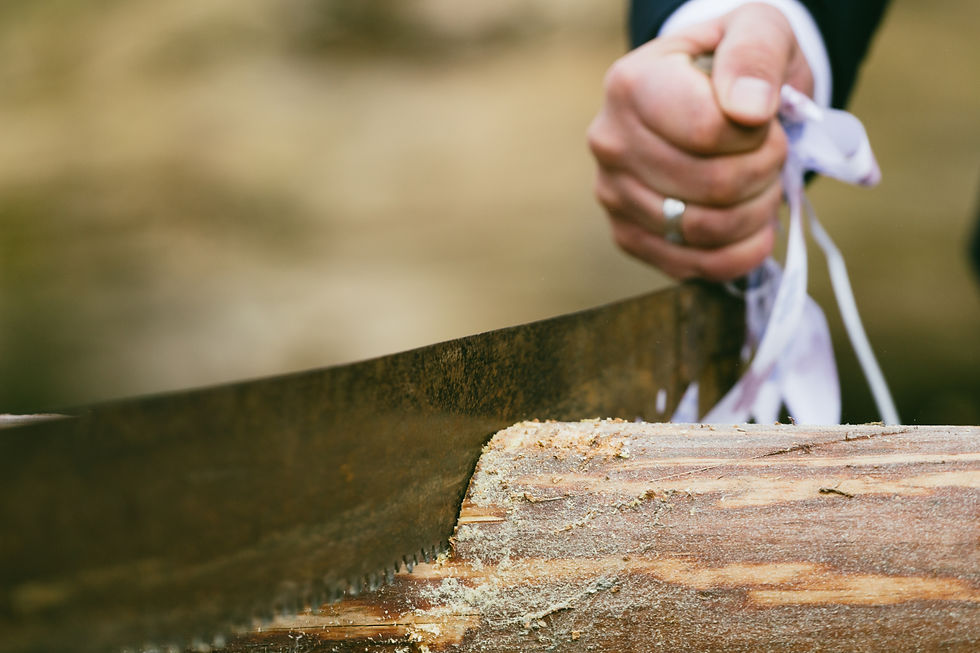The Ultimate Guide to Wood Borer Treatment for Homeowners
- P and P Pest Control
- Jan 17
- 4 min read
If you're a homeowner, you’ve likely heard of wood borers, but you may not know how to identify or treat them effectively. Wood borers, which include beetles, termites, and other pests, can cause significant damage to your wooden furniture, flooring, and structural elements. Left unchecked, wood borers can compromise the integrity of your home, making treatment essential for long-term protection.
In this guide, we’ll walk you through everything you need to know about wood borer treatment in Ahmedabad from identification to prevention, and the best treatment options available.

What Are Wood Borers?
Wood borers are insects that feed on and tunnel through wood. They include a variety of species, such as the common powderpost beetle, the old house borer, and the infamous termites. These pests target both hardwood and softwood, often choosing damp or decaying wood as their feeding grounds.
While the damage caused by wood borers might not be immediately visible, over time, their tunneling can weaken wooden structures, furniture, and beams. The holes they leave behind often resemble tiny pinpricks on the surface of the wood.
Signs of Wood Borer Infestation
Identifying a wood borer infestation early is crucial to limiting the damage. Here are some key signs to look out for:
Tiny Holes in Wood: One of the most obvious signs of wood borer activity is the appearance of small, round holes on wooden surfaces. These holes are where the insects have exited the wood after tunneling inside.
Powdery Residue: As wood borers tunnel through wood, they often leave behind a fine powdery substance called frass. This is a mixture of insect droppings and wood particles and often accumulates around the holes.
Wood Damage: Over time, the tunnels created by wood borers will weaken the wood, making it more susceptible to breaking or crumbling. You may notice soft or spongy wood when probing with a tool or your fingers.
Sounds of Tunneling: Some homeowners report hearing faint tapping or rustling sounds coming from wooden areas. These noises are made by larvae as they chew through the wood.
How to Treat Wood Borer Infestation
If you notice any of these signs, it’s time to take action. There are several methods to treat wood borer infestations, ranging from DIY treatments to professional extermination services. Here’s an overview of the most effective options:
1. Inspect the Extent of the Infestation
Before you begin treatment, assess how widespread the infestation is. This will help you decide whether you can handle it yourself or if you need to call in the professionals. For large or severe infestations, professional pest control is often the best option.
2. Use Insecticidal Treatments
Insecticidal sprays and treatments are among the most common ways to kill wood borers. Look for products that are specifically formulated for wood-boring insects. These treatments typically contain pyrethroids or insecticidal oils that penetrate the wood and kill larvae and adult beetles.
Surface Sprays: These are applied directly to the affected wood’s surface and are often effective for surface-level infestations.
Injectable Treatments: For deeper infestations, injectable treatments are applied through drilled holes, allowing the insecticide to reach the larvae within the wood.
3. Boric Acid Solution
Boric acid is a natural and effective treatment for wood borers. It works by dehydrating and killing the insects upon contact. You can mix boric acid with water and spray it directly on the affected wood or apply it with a brush. Boric acid is a safer option for those looking for a less toxic solution and is especially effective for minor infestations.
4. Freeze Treatment
For smaller items like furniture or wooden artifacts, freezing can be an effective treatment. Place the infested wood in a freezer for several days (at least 72 hours) to kill the larvae and eggs. This method may not be practical for large infestations but is an excellent solution for delicate or valuable wood items.
5. Heat Treatment
Heat treatment is another effective method for killing wood borers. It involves raising the temperature of the wood to around 140°F (60°C) for several hours, which is lethal to wood-boring insects. While this technique can be expensive and may require professional assistance, it is chemical-free and effective for larger infestations.
6. Professional Pest Control Services
If the infestation is severe or if DIY methods aren’t working, it’s time to call in pest control professionals. Experts can assess the situation and provide treatments such as fumigation or advanced chemical applications that target wood borers at every stage of their lifecycle.
Preventing Future Infestations
Once you’ve treated the infestation, taking preventive measures is crucial to avoid future wood borer problems. Here are a few steps to protect your home from future infestations:
Fix Moisture Problems: Wood borers thrive in damp conditions, so ensure that your home has good ventilation, especially in areas like basements, attics, and crawl spaces. Repair any leaks or water damage immediately.
Use Preservative Treatments: Applying wood preservatives to your wooden structures and furniture can deter borers from infesting your home. These treatments are designed to penetrate the wood and create an inhospitable environment for pests.
Regular Inspections: Inspect wooden structures and furniture regularly for signs of infestation, especially if your home has had previous problems with wood borers.
Store Firewood Away from the House: If you use firewood, store it away from your home to prevent wood borers from migrating indoors. Avoid stacking wood directly against exterior walls.
Conclusion
Wood borer infestations can cause serious damage to your home’s wooden components, but with early detection and effective treatment, you can protect your property. Whether you choose to handle the problem yourself with DIY methods or hire a professional, the key is to act quickly and thoroughly. By following this guide, you can keep your home safe from the destructive effects of wood borers and ensure your wooden investments last for years to come.



Comments